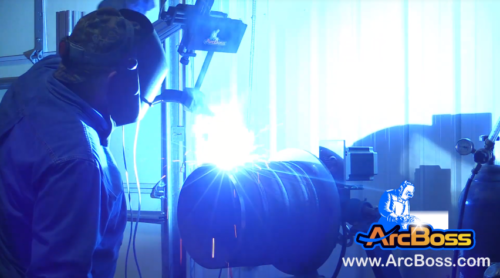
For many fabricators, manual welding is still the best procedure for most manufacturing activities. But automated welding systems can provide an incremental increase in quality, productivity, and profitability if done correctly.
There are a lot of fabricators facing the challenges of escalating labor costs, skills shortages, and global competition. It is most beneficial to automate your welding services if the quality of the weld is critical or if repetitive welds must be executed on identical parts.
It would be more practical for businesses producing limited quantities of products that build accurate welds to transition to semi-automatic welding.
Adapting to fully-automated welding would require more planning and consideration if you will be aiming for your output to be efficient, productive, profitable, and repeatable.
Before you decide how you want to automate your welding process, be familiar with the pros and cons of automated welding so you can make better decisions as you take your first step.
Pros of Automated Welding
You can get a lot of benefits when you automate your welding processes. Below are the four main advantages of automated welding.
Improved Weld Quality
In manual welding, the rate of producing reject welds increases as welders become tired. Automating the part placement and the torch will reduce the chances of having human error and producing reject welds.
Increased Output
A semi-automated welding machine operated by a proficient operator produces at least twice the output of two skilled welders. If a skilled welder had an emergency and cannot work for the day, then your business will have less output for the day. Skilled machine operators are more readily accessible than a group of seasoned welders.
Reduced Consumables
Consumables are easily-overlooked parts of the automated welding processes. The nozzles, contact tips, and gas diffusers can significantly affect the output. The right consumable strategy and the right combination for automated welding help reduce cost and improve performance.
Reduced Labor Costs
Semi-automatic welding requires minimal set-up time and faster welding speed. An automated welding system can easily overshadow a skilled manual welder because it minimizes the probability of having human errors during the welding process.
Cons of Automated Welding
Welding automation also has its disadvantages. But every drawback can be turned into opportunities. They should be recognized the moment you start automating your welding processes.
Higher Initial Investment
One drawback of investing in automated welding equipment include high capital expenditure. Automated welding processes require a higher initial investment than manual welding processes.
Manual welding may be more cost efficient, but in the long run, you might still find it as costly or costlier than automated welding. You’d have labor costs, maintenance repairs, production waste cost, and unforeseen emergencies for your store and employees.
You can start with more affordable semi-automated systems instead. If you’re looking for cost-efficient semi-automated welding equipment, Arcboss got your back!
Flexibility
Around 90 percent of manufacturing companies who do not have automated systems sees the lack of flexibility as a major pitfall. While manual welders can conveniently move from one part to another, automated welding machines can only focus on a pivotal niche in the welding process.
One weakness of a skilled welder is his endurance to consistently produce good outputs for the whole day. While automated welding machines lack flexibility. The thought of semi-automated welding makes up for the weakness of both human and machine.
Furthermore, tools like welding positioners, welding rotators, and welding manipulators can provide more flexibility as they allow the worker to produce consistent high-quality outputs.
Automation Replacing Welders
Studies show that AI is now slowly influencing the welding industry. Some even say that robots may replace humans someday, but that’s not necessarily the case. A skilled manual welder can produce remarkable quality welds with more flexibility.
Semi-automatic welding is the most common category of welding automation because it unites the capabilities of both human and machine as they produce more efficient results than a skilled welder and a precise robot.
Automation technology, if used wisely and effectively, can produce major opportunities for the future.